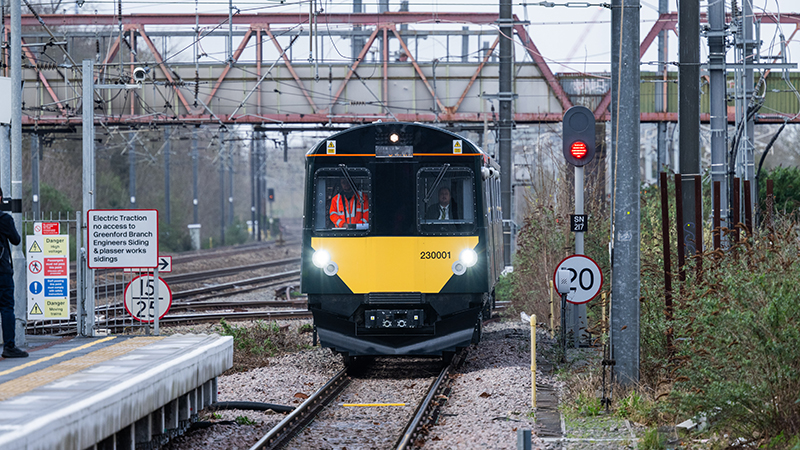
A third of the UK rail network does not need to be electrified to reach net zero, and could instead be decarbonised with battery trains.
That is the claim of a new report published last week (11 April) by the Railway Industry Association (RIA), which said an order for a fleet of battery-electric trains “should be accelerated as a matter of priority”.
The rail network is already 38% electrified, and proposed or in-progress government plans will increase that to 51% over the next 10 years or so, according to the RIA. The new strategy identifies a further 15% of routes for electrification – which, combined with 34% battery trains, could decarbonise all passenger services and 95% of freight.
The report is “very thoroughly analysed”, said David Shirres, editor of Rail Engineer, to Professional Engineering. “The issue with discontinuous electrification, which is really why you need battery trains, is whether the line concerned would have any significant freight traffic on it,” he said.
“The problem with freight is that the freight route isn’t like passenger routes, which are quite clearly defined. You have maybe long-distance traffic, and therefore you’re forcing diesel trains onto electric railways, because that last few miles they can’t do.”
Despite the RIA report saying the new fleet would “bring forward benefits at no additional cost to the public purse”, Shirres said battery trains would probably be more expensive. “My understanding is that battery trains are probably 30% more expensive per mile to run than a straight electric train. But it’s certainly true the technology has moved on.”
Limited numbers of battery trains are deployed in early projects on the UK network. In February, a Great Western Railway train reportedly travelled 86 miles (138km) on its FastCharge battery without recharging, a UK record, while the first fleet of battery-electric trains started operating on Merseyside in October last year. The service has reportedly been hit by delays, although Rail Magazine reported that issues have been “mostly down to software”.
Responding to the RIA report on X, David Powell, programme director for rolling stock at Merseytravel said: “We’re working through the associated challenges: technical, operational, infrastructure, some just associated with doing something new! The concept is solid for the right application.”
He added: “Our application should work well and deliver good battery life, as our stock operates on both electrified and non-electrified infrastructure.”
‘Policy vacuum’
Hydrogen fuel cell trains could also offer a solution for long routes without electrification, the RIA report said – but only if cost can be reduced and hydrogen supply improved, and they would not be suitable for freight.
“The UK does need a hydrogen economy if it’s going to decarbonise, because you need a flexible energy carrier. There is frankly no sign of that hydrogen economy happening,” said Shirres. “Without a hydrogen industry, hydrogen trains make no sense.”
A carbon tax on fossil fuels could accelerate the development of the hydrogen economy and enable hydrogen trains, he added, although he said there is little political appetite for such a move.
Overall, the strategy “keeps things moving” despite a lack of momentum from government following the Williams-Shapps report three years ago, Shirres said. “RIA have done an excellent job of filling a policy vacuum, and they have to be commended on that. And all their strategy is to open up to get the industry behind that report, so that it gains some level of official traction.”
Whether the final amount of battery-electric trains is a third, a quarter, or 20%, such a shift is likely to take some time, he added.
David Clarke, technical director at RIA, said: “Our analysis provides an ‘art of the possible’ strategy for the government and the railway industry. Ordering a fleet of battery-electric trains, a strategic and a consistent approach to electrification and quick green wins on less intensively-used routes can all help achieve a more efficient and low-carbon railway by 2050. Considering this as a ‘track and train’ strategy allows us to permanently lower the cost of running the railway.
“Recent RIA-commissioned research by Steer found that passenger numbers will grow between 37% and 97% by 2050, depending on future rail policy. So, it is vital that the government now makes some decisions on infrastructure and rolling stock which will enable investors, rail planners and suppliers, as well as the wider rail economy, to deliver a better and more sustainable railway for passengers and taxpayers in the future.”
